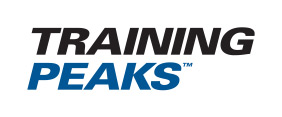Here we encourage athletes to leave their arm out in front a moment longer, the timing cue is to start the pull as the face enters the water, not before. Most report these first attempts as clumsy, and describe it as feeling “wrong.” Persevere, as this is tricky to coordinate for a swimmer who has been swimming this way for a long time, but when they get it right, they soon notice that their forward momentum is improved, and most (or all) of the dead spot in their stroke is eliminated. If you find breathing bilaterally tricky, this tip usually makes it much more comfortable and easy to master.
We are also advocates of the Swim Smooth CSS protocol, where by undertaking a simple pacing test available here an athlete is able to consistently train at a level that allows proper technique, is challenging toward the end of the session, and works smartly to increase threshold swim pace. This is akin to sub-threshold training in running. It works by combining a swimmer’s sub-threshold 25 or 50 pace over multiple repeats with short rests, easy at the start, not so easy at the end. Results are fast coming, so regular retesting is necessary.
In phase three we overlay a stroke ramp test, which is simply asking the athlete to start at their normal stroke rate, and then asking them to swim three strokes a minute faster each 25 or 50 repeat. We record their time, perceived effort and stroke turnover, producing a rough graph we can use to ascertain a likely optimum stroke rate.
Simply put, an athlete increasing their stroke rate (without breaking down) should get faster with each short interval, and many will do so at the same perceived effort for that increased stroke rate. The sweet spot turnover is generally where the athlete’s interval times are at their fastest, the stroke rate is sustainable if hard, and their perceived exertion is the same as the last interval (which was slightly slower). This test is based on perceived exertion, so it’s not an exact science, but it’s pretty accurate and can be fine-tuned as the athlete learns to swim with an increased turnover.
So, make your choices, plough up and down the pool for the next six weeks, or invest in yourself to become a neater, smarter swimmer. The speedwork comes later, and the faster times will take care of themselves come race time!
Sign up for a free 7-day TrainingPeaks Athlete Premium Trial, or check out our Training Plan Store for the perfect plan for your next endurance event.


